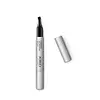What's inside
What's inside
 Key Ingredients
Key Ingredients

 Benefits
Benefits

 Concerns
Concerns

 Ingredients Side-by-side
Ingredients Side-by-side

Water
Skin ConditioningDimethicone
EmollientOryza Sativa Starch
AbsorbentButylene Glycol
HumectantPolymethylsilsesquioxane
Glycerin
HumectantSqualane
EmollientDimethicone Crosspolymer
Emulsion StabilisingPhenoxyethanol
PreservativeLaureth-4
EmulsifyingEthylhexylglycerin
Skin ConditioningHydroxyethylcellulose
Emulsion StabilisingChlorphenesin
AntimicrobialCarbomer
Emulsion StabilisingArgania Spinosa Kernel Oil
EmollientDisodium EDTA
Glycogen
HumectantSodium Hydroxide
BufferingHydrolyzed Rhodophyceae Extract
Dextran
Acetyl Tetrapeptide-3
Skin ProtectingTrifolium Pratense Flower Extract
AstringentWater, Dimethicone, Oryza Sativa Starch, Butylene Glycol, Polymethylsilsesquioxane, Glycerin, Squalane, Dimethicone Crosspolymer, Phenoxyethanol, Laureth-4, Ethylhexylglycerin, Hydroxyethylcellulose, Chlorphenesin, Carbomer, Argania Spinosa Kernel Oil, Disodium EDTA, Glycogen, Sodium Hydroxide, Hydrolyzed Rhodophyceae Extract, Dextran, Acetyl Tetrapeptide-3, Trifolium Pratense Flower Extract
Water
Skin ConditioningAlcohol
AntimicrobialAmmonium Acrylates Copolymer
Vp/Va Copolymer
Hydroxyethylcellulose
Emulsion StabilisingPhenoxyethanol
PreservativeButylene Glycol
HumectantPanthenol
Skin ConditioningPEG-12 Dimethicone
Skin ConditioningCaprylyl Glycol
EmollientParfum
MaskingSodium Bisulfite
AntioxidantLaurtrimonium Chloride
EmulsifyingPolysorbate 60
EmulsifyingDisodium Phosphate
BufferingSodium Phosphate
BufferingHexyl Cinnamal
PerfumingBenzyl Salicylate
PerfumingLinalool
PerfumingWater, Alcohol, Ammonium Acrylates Copolymer, Vp/Va Copolymer, Hydroxyethylcellulose, Phenoxyethanol, Butylene Glycol, Panthenol, PEG-12 Dimethicone, Caprylyl Glycol, Parfum, Sodium Bisulfite, Laurtrimonium Chloride, Polysorbate 60, Disodium Phosphate, Sodium Phosphate, Hexyl Cinnamal, Benzyl Salicylate, Linalool
Ingredients Explained
These ingredients are found in both products.
Ingredients higher up in an ingredient list are typically present in a larger amount.
Butylene Glycol (or BG) is used within cosmetic products for a few different reasons:
Overall, Butylene Glycol is a safe and well-rounded ingredient that works well with other ingredients.
Though this ingredient works well with most skin types, some people with sensitive skin may experience a reaction such as allergic rashes, closed comedones, or itchiness.
Learn more about Butylene GlycolHydroxyethylcellulose is used to improve the texture of products. It is created from a chemical reaction involving ethylene oxide and alkali-cellulose. Cellulose is a sugar found in plant cell walls and help give plants structure.
This ingredient helps stabilize products by preventing ingredients from separating. It can also help thicken the texture of a product.
This ingredient can also be found in pill medicines to help our bodies digest other ingredients.
Learn more about HydroxyethylcellulosePhenoxyethanol is a preservative that has germicide, antimicrobial, and aromatic properties. Studies show that phenoxyethanol can prevent microbial growth. By itself, it has a scent that is similar to that of a rose.
It's often used in formulations along with Caprylyl Glycol to preserve the shelf life of products.
Water. It's the most common cosmetic ingredient of all. You'll usually see it at the top of ingredient lists, meaning that it makes up the largest part of the product.
So why is it so popular? Water most often acts as a solvent - this means that it helps dissolve other ingredients into the formulation.
You'll also recognize water as that liquid we all need to stay alive. If you see this, drink a glass of water. Stay hydrated!
Learn more about Water